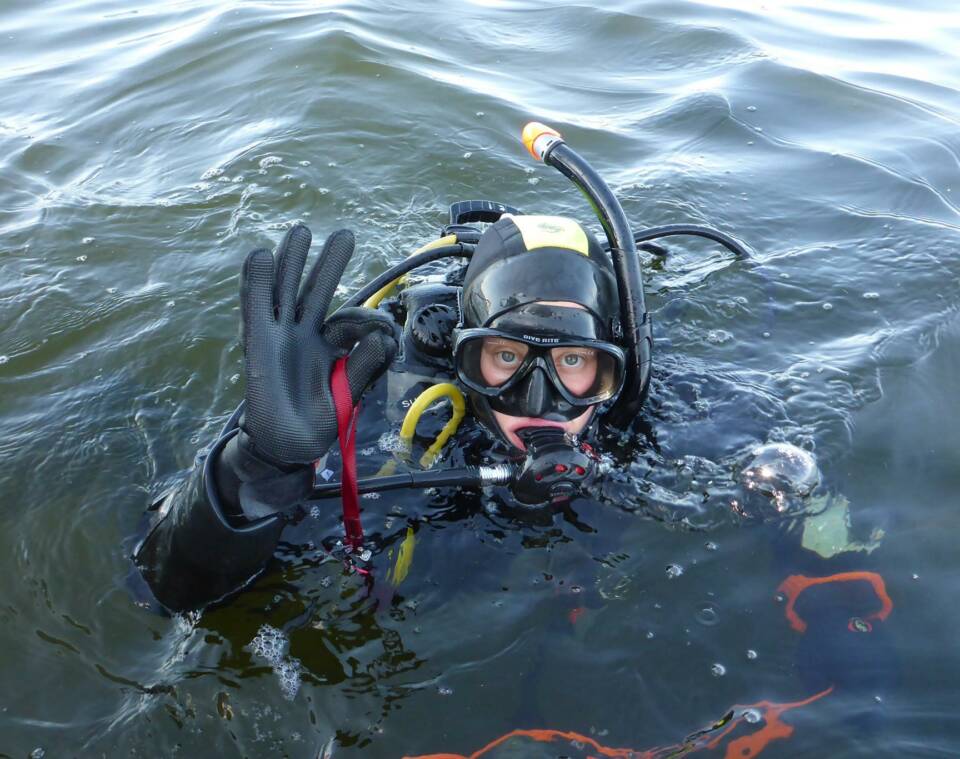
Is this Finland’s most interesting job? A podcast takes you on a journey with marine biologists to the natural treasures of the Baltic Sea
Metsähallitus’ new podcast series takes the listener deeper to explore the unique nature of the Baltic Sea and its conservation efforts.
In five episodes, experts from Metsähallitus’ marine team search for endangered species, plant seagrass meadows, restore spawning grounds for fish, collect human-made waste from the sea, and map the state of the Baltic Sea’s nature through diving.
“My all-time favorite destination is Luodematalat, a reef in the middle of the Gulf of Finland. It’s a dreamlike world where diving feels like being somewhere no one has ever been before. In those moments, I feel the urge to preserve the feeling for future generations that we still have untouched places,” describes marine biologist Maiju Lanki, highlighting the peak moments of her work in the podcast.

The Marine Team of Metsähallitus’ Nature Services does diverse work for the Baltic Sea’s nature. The Marine Team collects information about species, maps areas important for biodiversity, restores nature, and takes care of national parks and other protected areas located in marine regions.
Additionally, studies are conducted for activities outside protected areas. For example, wind turbines cannot be erected at sea without investigating the area’s natural values. Behind everything is the international and national goal of achieving a good state for the Baltic Sea.
Planting Seagrass Meadows
One of the important new initiatives is the restoration of marine nature. Metsähallitus, together with its partners, has experimented with planting a water plant called seagrass in new growth sites. Seagrass is a so-called key species in the Baltic Sea, as it grows in extensive meadows on sandy seabeds, providing shelter and food for numerous other species.
However, seagrass has been declining in the Baltic Sea at an alarming rate due to eutrophication, among other reasons. Thousands of hectares of seagrass have disappeared on the west coast of Sweden, says marine biologist Aija Nieminen in the first episode of the podcast. The experiments with seagrass meadow restoration have shown promising results, but the excitement is always high when divers descend to the planting sites to check the plant’s growth.
“I remember the first time we went to monitor the planted seagrass, and a pipefish – a long fish with a trumpet-like snout – was swimming among the planted seagrass. It brought a smile to my face,” says Aija Nieminen.
Restoring the Baltic Sea through Collaboration
An important part of the Marine Team’s work is collecting information about the species and the state of nature in the Baltic Sea. Marine biologist Essi Keskinen has been diving in the Baltic Sea for about 30 years and has witnessed a worrying change firsthand.
“A couple of summers ago, we dived in the Archipelago Sea, very far out in the outer archipelago, where the waters are usually clear, the bladderwrack is clean, and the shores are pristine. Now everything was covered with a thick layer of filamentous algae. This indicates that there are a lot of nutrients, and the water was terribly warm. I had never seen so much filamentous algae in the open sea,” Keskinen laments.
The Baltic Sea is threatened by human-induced nutrient loading, pollution, climate change, and invasive species, but efforts to protect the sea are also significant. Metsähallitus leads the Biodiversea LIFE IP project, which is Finland’s largest collaborative effort to safeguard the diverse nature of the Baltic Sea. Is the dream of a clean Baltic Sea still achievable?
“I want to be optimistic. In the Biodiversea project, I have noticed that we have a lot of expertise. Together, we can improve the state of the Baltic Sea,” believes Anette Bäck, the project manager.
You can find the “Vedenalaisen varjelijat” podcast, which tells about the work of Metsähallitus’ Marine Team, on Spotify and other popular podcast platforms or on the Biodiversea project’s website (in Finnish)(siirryt toiseen palveluun).
Back to points of view